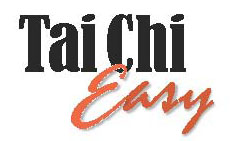
Copyright © 2005-2010
All Rights Reserved
TaiChiEasy.org
|
|
Tai Chi and Qigong Practice Guidelines© by Dr. Roger Jahnke
In the practice of all forms of Qigong, including the various styles
of Tai Chi, including Tai Chi Easy™, there are a few guidelines that
will give the most rapid growth and learning while helping you to stay
in the comfort zone.
These practices are all very mild, however, many people are very at risk
for injury, perhaps of the knees. The foot work in some forms of Tai Chi
has caused some problems in a very small percentage of people. Always
start carefully and allow your progress to be "slow but sure".
Some of the complex and vigorous forms of Tai Chi and Qigong are contraindicated
in people who are weak from illness or in the wisdom years. Be very hesitant
to go to a Qigong or Tai Chi class and go to the front of the room. Linger
in the back and follow these guidelines no matter what is happening in
the class and you always improve, slowly but surely. In your personal
practice time continue to progress carefully.
Do:
Relax
deeply and allow the mind to be free of concerns and considerations.
In China this state of mind is sometimes called "cheerful disinterest",
"neutral" and "emptiness".
Practice daily if possible. The results you seek are the result of perseverance.
Chinese tradition says "perseverance furthers." Carefully
and correctly implemented Qigong and Tai Chi are safe to practice even
several times a day. The practices are gentle and based on enhancing
natural biological and energetic mechanisms of self restoration. If
you are unwell enough to be off of work or school you have time to carefully
do lots of Qigong or Tai Chi practice.
In Qigong feel free to make up your own routine and change the practices
to suit your needs, likes and limitations. One of the most powerful
forms of Qigong is called Spontaneous Qigong and is completely intuitive.
In Tai Chi it is generally less acceptable to modify the form. However,
people with severe diseases should feel free to modify the practices
to honor their comfort zone and potentiate self healing.
Approach
each practice from the richness of deep intention and belief in self
healing. In the Health World libraries you will find research that clearly
demonstrates the healing benefits of Qigong and Tai Chi. Keep it foremost
in your mind that both Tai Chi and Qigong are profoundly healing practices.
Rest in knowing that you have tapped a powerful pool of healing resources.
Allow the mind to rest in quiet indifference. Worry and anxiety turn
off the naturally occurring, self healing resources. It is when the
mind is free of concern that the profound, internal, self healing resources
are spontaneously activated.
Notice that as you mature in these practices that the breath spontaneously
regulates so that both the inhalation and exhalation are slow and somewhat
full; not urgent, not exaggerated, just restful, intentful, conscious
and notably calm.
Don't:
Do too much. Tai Chi and Qigong are intended to assist
you in self healing and to help you become more enduring and vital.
Take it very, very easy. Ease helps to activate the Qi. Extra effort
and trying hard go against the natural benefits in all varieties of
Qigong. Going too far, too fast may cause discomfort and may result
in you saying, "This is too much." Then, the profound benefit
is lost. Achieve your goal of healing by allowing yourself to be free
from the stress and rush that cause the organs, tissues and glands to
become deficient. Expand your practice slowly and personal improvement
is guaranteed.
Be fooled by the illusion that Qigong or Tai Chi seems like
nothing much. The vigilant application of these simple practices
has demonstrated, over thousands of years of careful refinement, the
ability to mobilize the naturally occurring healing forces within you.
An ancient Chinese proverb says, "that which appears great on the
outside is weak on the inside, that which appears to be inconsequential
on the outside is great and powerful on the inside". Qi cultivation
is not an ever complexifying chain of details and new innovations, it
is an ever simplifying and deepening practice that is refined toward
perfection.
Expect too much, too soon. Know that on occasion extraordinary results
occur right away. Bring Qigong into your life delicately. Too much of
such a good thing and you may say, "I don't have time for this".
Then the remarkable possibility for self restoration will be lost. Most
often dramatic results come over time with vigilant practice.
1st Warning:
Learning Qigong from a book, a video or even a great teacher is always
frustrating particularly because of your longing to perfect the practice,
now. Please, go very slowly and intentfully, follow the directions the
best you can. Give yourself permission to invent some things too. Remember
it is not so important to do the practice just like the instructor suggests.
More important is to do the practice just like it works best for you.
The only way to be wrong about your implementation of these practices
is to NOT do them or to not follow the rule of "go slow and easy".
Therefore, the most important rule in Qigong is-DO IT!
2nd Warning: Qigong
and Tai Chi are hazardous to your health problems and they have the potential
to alter the definition of health care. They help resolve many illnesses
for no cost. They have no side effects. These practices may limit your
doctor visits. They are dangerous to the conventional medical system and
could have a radical impact on your personal life, your community, your
society and the national debt.
|
|
